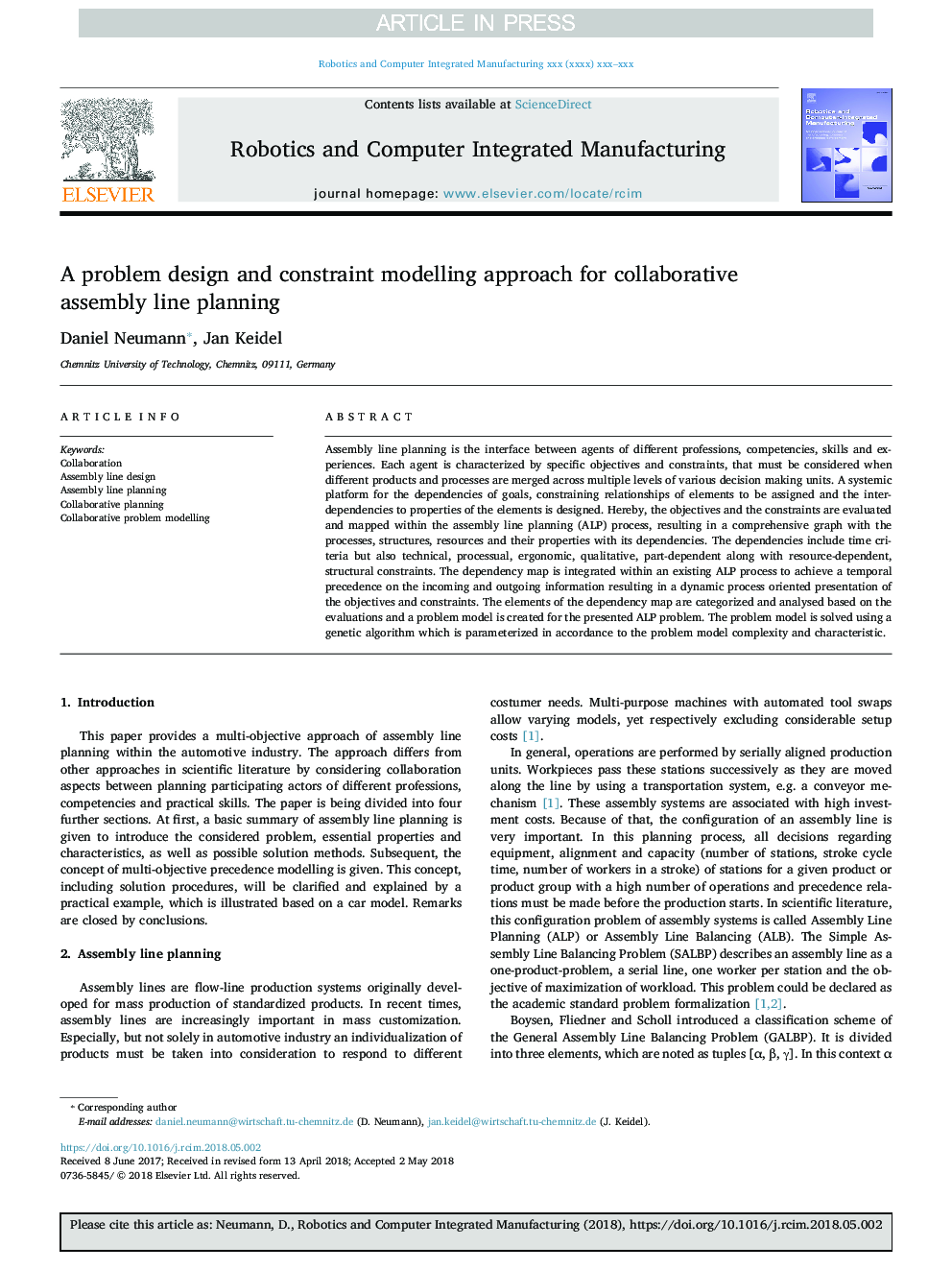| Article ID | Journal | Published Year | Pages | File Type |
|---|---|---|---|---|
| 11505983 | Robotics and Computer-Integrated Manufacturing | 2019 | 9 Pages |
Abstract
Assembly line planning is the interface between agents of different professions, competencies, skills and experiences. Each agent is characterized by specific objectives and constraints, that must be considered when different products and processes are merged across multiple levels of various decision making units. A systemic platform for the dependencies of goals, constraining relationships of elements to be assigned and the interdependencies to properties of the elements is designed. Hereby, the objectives and the constraints are evaluated and mapped within the assembly line planning (ALP) process, resulting in a comprehensive graph with the processes, structures, resources and their properties with its dependencies. The dependencies include time criteria but also technical, processual, ergonomic, qualitative, part-dependent along with resource-dependent, structural constraints. The dependency map is integrated within an existing ALP process to achieve a temporal precedence on the incoming and outgoing information resulting in a dynamic process oriented presentation of the objectives and constraints. The elements of the dependency map are categorized and analysed based on the evaluations and a problem model is created for the presented ALP problem. The problem model is solved using a genetic algorithm which is parameterized in accordance to the problem model complexity and characteristic.
Related Topics
Physical Sciences and Engineering
Computer Science
Artificial Intelligence
Authors
Daniel Neumann, Jan Keidel,
